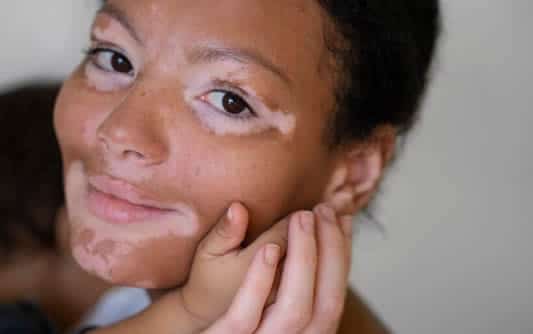Vitiligo affects between 0.5% to 2% of people globally. Even though it’s a rare condition, you’ve heard of it or seen it if you’re familiar with the pop music legend Michael Jackson, whose skin was notoriously discolored. But what is it exactly, and how can you be sure if you have it?
What is vitiligo?
Vitiligo is a disease that causes the loss of skin pigmentation, resulting in white blotches on the skin. Unfortunately, we don’t know the exact causes of vitiligo. What researchers suspect is that vitiligo is an autoimmune response that is triggered by environmental factors.
Who Gets Vitiligo?
No one group of people is more susceptible to vitiligo — anyone can develop it, and men and women are affected equally. However, it’s more obvious with people who have darker skin tones. Vitiligo can develop at any age. However, most people develop the disease before age 40 and about half are diagnosed before they turn 21. Vitiligo is not contagious.
Types of Vitiligo
Recent consensus is that there are two types of vitiligo:
- Non-segmental vitiligo (NSV): The more common form of vitiligo, NSV, can manifest in multiple parts of the body and usually displays some symmetry in the location of the patches.
- Segmental: This form of vitiligo tends to affect a specific body part or limb.
Signs of Vitiligo
Because skin irregularities are quite common and can range in size, shape, color, and degree of severity, here are five signs that you may have vitiligo, which isn’t life-threatening:
- You have patches of paler or white skin: The telltale sign of vitiligo is well-defined patches of white skin. The patches are caused when pigment-producing cells die or stop producing melanin, which is the pigment that gives you your skin tone.
- Your eye color changes: Your eye color comes from pigmented cells in the iris and retina, which can be affected if you have vitiligo.
- Your hair turns white: Your hair, eyebrows, eyelashes, or facial hair turns grey or white unexpectedly along with parts of your skin.
- Insides of your mouth develop white patches: Your mucous membrane is also susceptible to vitiligo, and this might appear as loss of pigmentation within your mouth and nose.
- You have another disease: In a 10-year study, nearly 20% of vitiligo patients had at least one other autoimmune disease. Vitiligo is also linked to thyroid disease and alopecia areata (sudden hair loss). Thyroid disease was 15 times more common in these patients than in the general U.S. population, while alopecia areata was 31 times more common.
Treatment for Vitiligo
While there is no cure for vitiligo, some treatments are available to stop or slow the discoloring process and return some color to your skin (depending on your natural skin tone). Most common treatments include:
- Topical immune suppressing medication
- Phototherapy
- Cosmetic make-up
While not preventative or restorative, depigmentation is an option for extreme cases of vitiligo and aims to depigment all of your skin to achieve even color.

